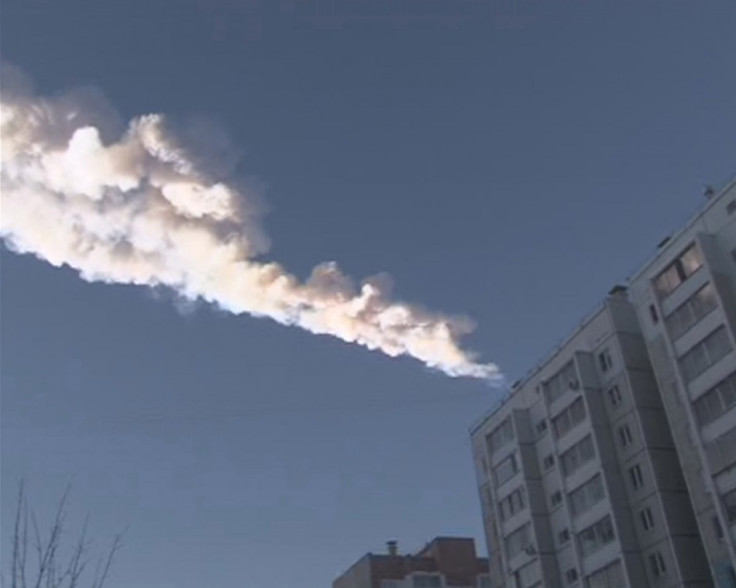Russian Meteor: Scientists Discover Origin, Composition and Other Details

Scientists have finally tracked down the origin of the meteorite that exploded over the skies of central Russia and left more than 1000 people injured.
The meteorite which struck Russia earlier this month had sent across a wave of panic just hours before 150ft wide asteroid 2012 DA14 was expected to enter earth's atmosphere on 17 February.
Now, a team of astronomers from Colombia has tracked down the origin of the meteor.
Scientists from University of Antioquia in Medellin used trigonometry to define the height, speed, and position of the meteor as it entered earth's atmosphere. Also with the help of amateur video footage, they could plot the meteor's trajectory as it entered the Earth's atmosphere and then reconstructed its orbit around the Sun.
The astronomers also used "Monte Carlo" methods to understand the meteor's orbiting behavior.
After their studies, they could determine that the meteor's origins are from an asteroid group known as the Apollo asteroids.
"Its elliptical, low inclination orbit, indicates a solar system origin, most likely from the asteroid belt between Mars and Jupiter," Dr Stephen Lowry, from the University of Kent told BBC.
The meteor's age is understood to have been 4.5 billion years and its weight to be 10,000 tons.
The meteor's rock type was found to be "chrondite," which is one of the most commonly available type of rock on the surface of the earth.
Thousands of volunteers from Chelyabinsk region in Russia helped collect fragments of the meteor scattered on the after the explosion. The biggest meteor fragment discovered weighed about 2.2 pounds.
The Russian meteor has been named "Chebarkul meteorite" by scientists who have also discovered a variety of strange minerals on the meteor including olivine, pyroxene, troilite, kamacite, and taenite. The meteorite is also made up of 10% iron according to Web site Popular Science.
The loud explosion of the meteor blew up the window panes of several buildings in affected regions, leaving residents injured and shocked. On the day the meteor entered earth's atmosphere, a bright trail of burning rocks in the sky was seen which was followed by two loud explosion sounds and tremors. The incident took place above the skies of Chelyabinsk, Yekaterinburg, and Tyumen. Citizens in Kazakhstan also witnessed the meteor impact.
Hundreds of videos of the meteor explosion could be captured by the dash and traffic cameras in the cars and the videos were immediately uploaded on YouTube and networking sites by residents.
"Perhaps with more data, we can determine roughly where in the asteroid belt it come from," Dr Lowry added.
The findings are published on Arxiv website.
© Copyright IBTimes 2025. All rights reserved.





















